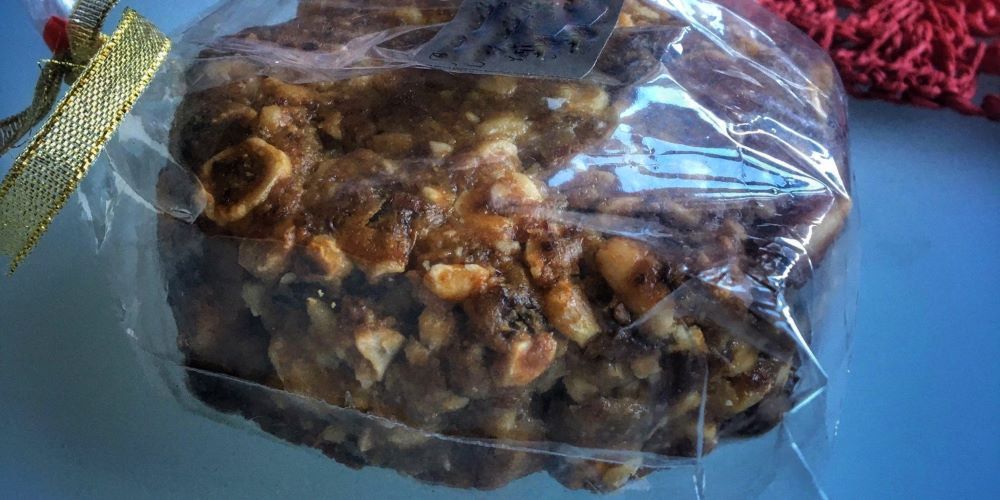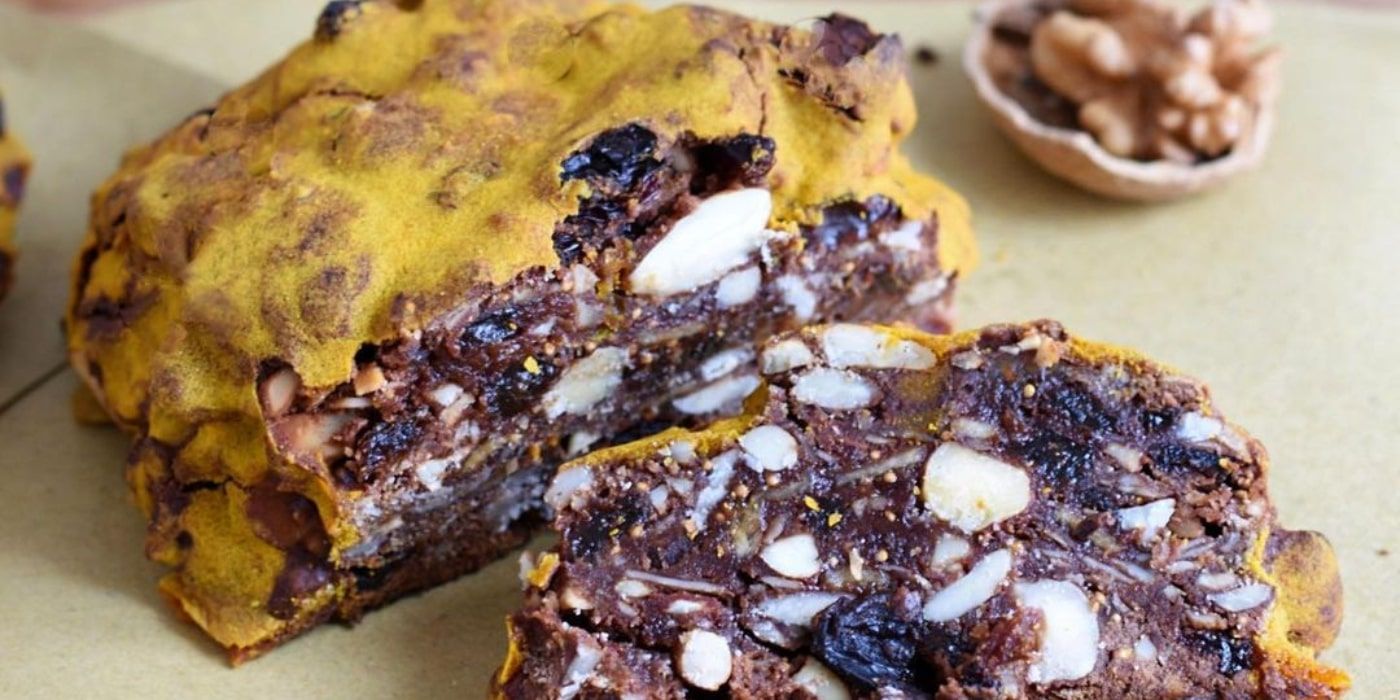Sol Invictus - the unconquered invincible Sun – Romans celebrated during the Imperial Rome age (II-III century a.D.) to mark the day with less dailylight, better known as the winter solstice which astronomically happens every year on the 21st or 22nd of December. This day, which was particularly rich of spiritual meanings for the society of the Ancient Rome, was feasted with religious rytuals and with a delicious dessert, Pangiallo, still on the tables of Romans during the festive season.

The meaning of Pangiallo

Pangiallo, with its shape and colour reminding of the invincible sun, is a sweet bread made with dried and candy fruits and spices, eaten as a dessert in the past as a wish for the return of the dailylight. After the christianization of the Roman Empire, it became – and still is - a Christmas delicacy. Even though nowadays Pandoro and Panettone are the most famous Christmas desserts, Pangiallo still has an important place on the Roman tables during the festive days.
Pangiallo: the original recipe
How to make Pangiallo? The original recipe was lost in the midst of time but the main ingredients to bake a good Pangiallo are still used to make this bread, which must be left to rise for at least 12 hours. Cinnamon, zafran, honey, almonds and nuts must be mixed together to made a dough rich of flavours and tasty. Let's see with us all the ingredients and the main proceedings to make a perfect Pangiallo.
Ingredients (for a 500 grams dough):
Flour 200 grams
Fresh brewer's yeast 10 grams
Sugar 150 grams
Candied orange 50 grams
Candied citron 50 grams
Pine nuts 50 grams
Walnuts 50 grams
Almonds 100 grams
Hazelnuts 100 grams
Raisins 150 grams
Powder cinnamon 1 teaspon
Extra virgin olive oil 50 grams
Albums 2
Water 300 grams
For the icing:
Saffron 0,25 grams
Water 40 grams
Extra virgin olive oil 1 tablespoon
Flour 1 tablespoon
Leave the raisins to soften in 300 grams of warm water for 30 minutes then squeeze out the excess water, in the meanwhile dissolve 10 grams of brewer's yeast in 40 grams of warm water, mixing with a teaspoon. Make a well with the flour and add sugar and cinnamon powder, pour the yeast dissolved in the water and start kneading to collect the ingredients, adding also the olive oil.
In a bowl pour chopped pine nuts, almonds, hazelnuts and walnuts, the candied citron and orange, the albums and mix with a spoon. Add the fruit to the dough incorporating also the well squeezed raisins and knead by hand. Place them on a baking tray lined with baking paper, cover them with a cloth and leave to rest at least for 12 hours.
After the resting time, prepare the icing with flour, oil, saffron and water mixing with a spoon and brush the dough with the icing. Let bake in a pre-heated static oven at 170 °C for 45 minutes. Now your own Pangiallo is ready to taste.
Discovery the traditional roman cuisineSuggestions for a variation of Pangiallo recipe

If you are a chocolate lover, you can add powder cocoa or chocolate chips in the dough; if you want instead a Pangiallo even richer of ingredients, you can mix with dried fruits also dried figs and dates.
About the author
Written on 04/12/2023




Elisa Verrazzo
Discover with us how to cook Pangiallo, a traditional winter and Christmas recipe coming from the Ancient Rome.